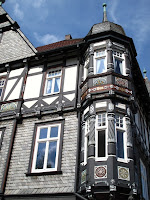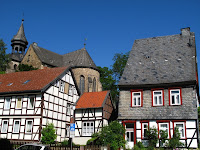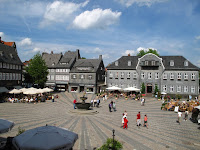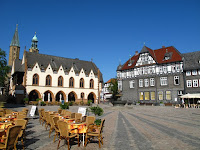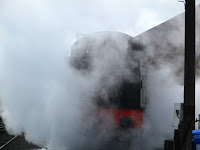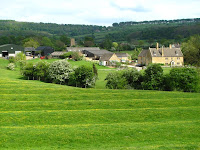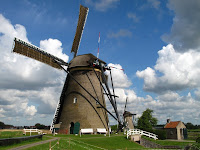 The Kaiserpfalz was open so we had a look through as it is reportedly “the largest and most impressive Romanesque royal palace to have survived anywhere in Europe”. We left, somewhat under-whelmed and after a quick look at the Henry Moore sculpture hidden away behind the Kaiserpfalz we began our return journey.
The Kaiserpfalz was open so we had a look through as it is reportedly “the largest and most impressive Romanesque royal palace to have survived anywhere in Europe”. We left, somewhat under-whelmed and after a quick look at the Henry Moore sculpture hidden away behind the Kaiserpfalz we began our return journey.

Arriving in Hanover, we made our way to the Herrenhausen Garten, or the Royal Gardens of Herrenhausen.
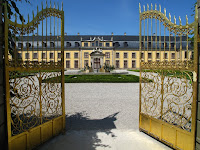 Laid out at the beginning of the 18thC it is a wonderful example of a Baroque formal garden with a huge parterre and, apparently, 27km of hedges to trim. The Herrenhausen Palace was destroyed in WWII and the interior of the grotto has been given a modern makeover that is absolutely stunning but, apart from that, the gardens are much the same as they were originally conceived.
Laid out at the beginning of the 18thC it is a wonderful example of a Baroque formal garden with a huge parterre and, apparently, 27km of hedges to trim. The Herrenhausen Palace was destroyed in WWII and the interior of the grotto has been given a modern makeover that is absolutely stunning but, apart from that, the gardens are much the same as they were originally conceived. Across the road are the botanical gardens, with one of the best orchid collections in the world and a lime avenue leading to the Royal House of Hanover mausoleum; final resting place of a number of English Kings and their descendants.
Across the road are the botanical gardens, with one of the best orchid collections in the world and a lime avenue leading to the Royal House of Hanover mausoleum; final resting place of a number of English Kings and their descendants. The main fountain, which plays for restricted periods of the day, is claimed in the guide books to be the tallest fountain in Europe at 82m, but the one in Lake Geneva is taller (140m), as is the 91m one at Stanway Gardens in England (but perhaps England is not in Europe?) Although we did not check the entire 27km of hedges, the garden is almost 1km x 0.5km so it takes a fair time to cover the various different sections.
The main fountain, which plays for restricted periods of the day, is claimed in the guide books to be the tallest fountain in Europe at 82m, but the one in Lake Geneva is taller (140m), as is the 91m one at Stanway Gardens in England (but perhaps England is not in Europe?) Although we did not check the entire 27km of hedges, the garden is almost 1km x 0.5km so it takes a fair time to cover the various different sections.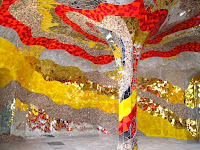 It was no great hardship, then, to head off to the airport and sit for a while reflecting on a German weekend that had been “einfach wunderbar.” Unfortunately, once we were on the plane we sat for another 80 minutes waiting for a thunderstorm over the English Channel to move out of our way. (It was only a 60 minute flight!) As it was, we still flew out of our way to get around the southern edge of the storm.
It was no great hardship, then, to head off to the airport and sit for a while reflecting on a German weekend that had been “einfach wunderbar.” Unfortunately, once we were on the plane we sat for another 80 minutes waiting for a thunderstorm over the English Channel to move out of our way. (It was only a 60 minute flight!) As it was, we still flew out of our way to get around the southern edge of the storm.


